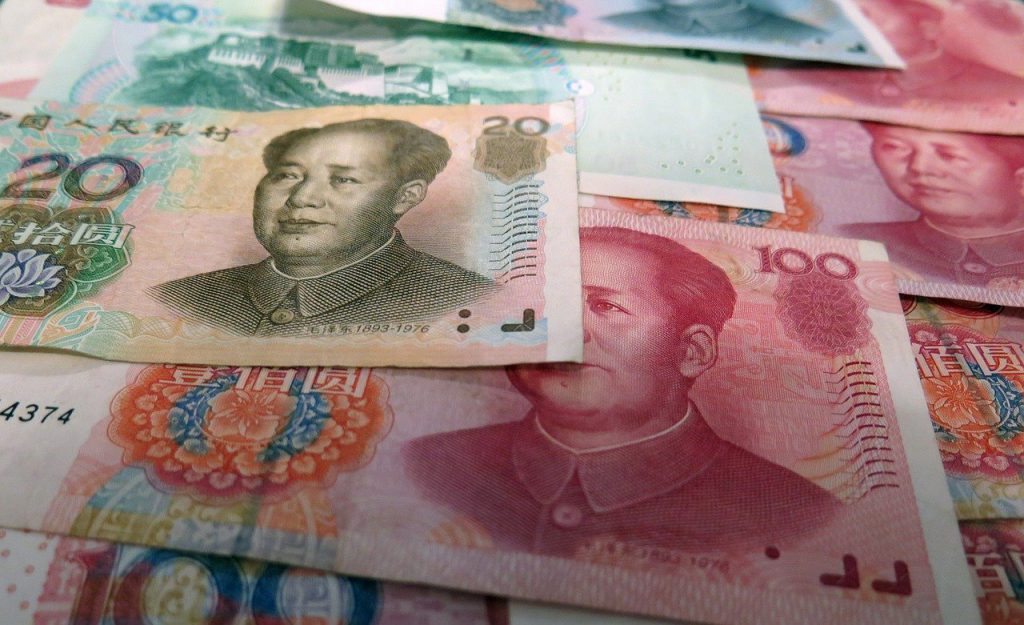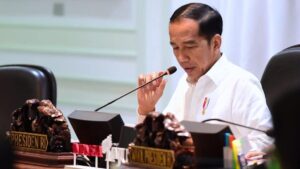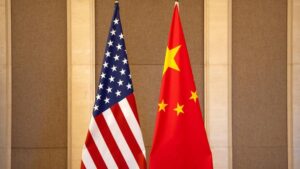Post-2013 Chinese Foreign Loan Policy in the Belt and Road Initiative: A “Debt-trap Diplomacy”?

Ilustrasi mata uang Renminbi. Foto: pixabay.com.
Introduction
The Chinese undertaking of its trillion-dollar Belt and Road Initiative (BRI) since 2013, and the speed by which the initiative is growing, has attracted substantial global concern. Dubbed as President Xi Jinping’s “signature foreign policy project”, BRI aims at fostering China’s regional connectivity and trading network primarily through infrastructure development, the majority of which are funded through loan schemes (Yujun, Gabuev, Haenle, Bin, & Trenin, 2019). While BRI promises vast economic merits to China’s neighbors, its reception has not been entirely positive. This attitude, for the most part, stems much from the criticism against China’s method in funding BRI projects, which puts minimum regard to the aspect of good governance and economic sustainability. This, argued the critics, has resulted in the problem of debt distress that many BRI partner-countries are currently facing (Yujun et al., 2019).
Few scholars have expressed such criticism so audaciously as Indian strategic analyst, Brahma Chellaney. In his controversial article, “China’s Debt-Trap Diplomacy”, Chellaney (2017) argued that BRI is a strategy of deliberate ensnaring of partner-countries into debts they cannot repay. As these partners fall into the debt-trap, they are coerced to accept agreements that entertain China’s geopolitical ambition at the expense of their respective interests. “In a sense”, he remarked, “it is even better for China that the projects don’t do well. After all, the heavier the debt burden on smaller countries, the greater China’s own leverage becomes” (Chellaney, 2017, para. 4). This narrative has found a particular liking among US-based analysts, who label China’s foreign lending policy as deceptive and predatory (Orchard, 2018; Parker & Chefitz, 2018). A typical response by the Chinese government is to turn these criticisms down, arguing that they are based upon distortive line-of-thinking (Yujun et al., 2019). Some may find truth in this response, while others, still skeptical of Beijing’s real intention, not much so. This notwithstanding, both should agree on one thing: the “debt-trap diplomacy” narrative, despite its compelling delivery, is still empirically under-conceptualized.
This essay seeks to analyze the nature of China’s post-2013 foreign lending policy and, particularly, the extent to which “debt-trap diplomacy” is a correct characterization of the policy. Towards this aim, this essay reviews the empirical cases of BRI partner-countries that experienced debt-related adversities from 2013 onwards, through the conceptual lens of neomercantilism. Understood as a state-led wealth-accruing economic strategy carrying a strong self-interested and manipulative undertone, neomercantilism is a concept often associated in the literature with the Chinese global economic strategy under Xi Jinping (Ferchen, 2018; Lo, 2018; Wigell, 2016). Duly informed, the essay argues that China’s foreign lending policy within the context of BRI does reflect some but not all aspects of neomercantilism. Of these, the neomercantilist aspect of deliberate deception is absent and, hence, the term “debt-trap diplomacy” oversimplifies the present state-of-affairs in ways that its alternative may have otherwise accurately captured.
Conceptual Framework: Neomercantilism
The term mercantilism, in its classical sense, refers to the economic system that prevailed in the age of imperialism wherein countries competed to project their power through maximizing national wealth, as expressed in the possession of gold (Magnusson, 1993). The modern world introduces a set of change and continuity to this system. Gold diminishes in importance as other forms of wealth gain prominence, while the advent of international institutions changes the nature of competitions between states. This development is captured in the new form of mercantilism called neomercantilism.
According to Gilpin, neomercantilism is “the priority of national economic and political objectives over considerations of global economic efficiency” (Gilpin, 1975, p. 232). By virtue of this priority, states often partake in “conscious policies of manipulation”, to transfer any cost it potentially incurs as much as possible to global actors. Neomercantilism can also be understood as a state-led strategy for a zero-sum competition in global economic interaction (Ziegler & Menon, 2014). Due to their competitive ethos, the attitude towards multilateral institutions among neomercantilist states is non-committal at best, confrontational at worst. Neomercantilism is often pictured as a disruptive force in the global liberal economic order, where the principles of cooperation, free-market and multilateralism become increasingly normative (Wigell, 2016).
In summary, neomercantilism is the modern version of an old strategy of maximizing national wealth in pursuit of power. This section has discussed four characteristics of neomercantilist states; their global economic strategy is (a) self-interested, (b) government-led, (c) competitively anti-multilateral, and (d) deliberately deceptive. At prima facie, the Chinese global economic strategy under Xi Jinping does reflect much of the stated characteristics. However, what is true in one aspect of the strategy may not be so in others. This in mind, the following section will examine the empirical observations on one specific facet of China’s global economic strategy, that is, its foreign lending policy from 2013 onwards.
Empirical Finding
Loan constitutes the main source of BRI funding, deriving primarily from Chinese government-owned and policy banks. The State Council, at the Communist Party’s behest, monitor, and coordinate major lending decisions in BRI—indicating a strong government-steered character (Hurley, Morris, & Portelance, 2018). To date, 125 countries have signed BRI-related agreements, 25 of which have fallen into serious debt distress and some to the point of defaulting (Kratz, Feng, & Wright, 2019; Xinhua, 2019). As such, they have undergone a series of negotiation with varying outcomes, most notable among which are the case of Sri Lanka and Tajikistan.
Sri Lanka is arguably the “cornerstone” case of the debt-trap diplomacy discourse; it, too, is perhaps the most frequently cited. Of symbolic importance is the Chinese procurement of a 99-year lease of Hambantota Port as a result of Colombo’s failure to repay the debt for the port’s construction (Mathews, 2019). Critics claimed that China had deliberately misguided Sri Lanka into accepting the project, despite knowing the latter’s incapability of paying back. The docking of a Chinese submarine on Sri Lankan shore in 2014 further fueled the critics’ “grand-design” narrative (Hillman, 2018). The Tajikistan experience, meanwhile, highlights the possibility of a debt non-repayment turning into encroachment of land and natural resources. In paying a China-funded power-plant project, Tajikistan transferred the ownership of two goldmines to Xinjiang-based TBEA Company in 2016, while earlier in 2011—in a non-BRI context—Tajikistan ceded parts of its land to China in a scheme to repay its foreign debts (Reynolds, 2018).
Dreadful as they seem, these cases of a debt-caused asset seizure and territorial encroachment are in fact exceptional. In a preliminary study on 45 debt renegotiations between China and BRI partner-countries, Kratz et al. (2019) found that write-offs are the most common outcome, followed by deferral. In some regions where writing-off debts is difficult, such as in Oceania, lengthening the duration of repayment is typically preferred (Zhang, 2018). Were’s (2018) study on Sino-African BRI projects, whereas, rejected the debt-trap narrative in its entirety, while noting an increasing Chinese commitment towards achieving prudent lending policy.
Despite the optimistic tone, these aforementioned studies still share a concern about the lack of transparency in BRI funding. Beijing is notoriously known for its pragmatic, case-by-case approach to debt renegotiations; their outcomes, accordingly, are largely unpredictable (Hurley et al., 2018). This stands in contrast to the approach taken by the Paris Club, a coordinating body of major creditor countries. Countries in the Club, unlike China, see as paramount the aspect of predictability and good governance in their debt-relief mechanisms (Callaghy, 2010). China, true to the neomercantilist competitive ethos, is reluctant to join this multilateral scheme, fearing the dominant Western voice in the Club may override its national interests (Wang, 2014). Notwithstanding, it is incorrect to point all the fingers to China alone while ignoring the agency of partner-countries. Many of the current partner-countries are bound to accrue a large number of debts anyway, as they are undergoing a period of economic expansion (Valladares, 2019). Indeed, statistics indicate that even prior to BRI some had already developed an all-time-high appetite for external loans (Were, 2018). An even greater problem is the serious level of corruption in many, if not most, partner-countries (Chin, 2018). Such condition disallows external loans from translating into the productivity desired, while increasing these countries’ likelihood of not paying back.
Concluding Remarks
What is the nature of post-2013 Chinese foreign lending policy and to what extent is labeling it as “debt-trap diplomacy” tenable? In answering this question, this essay has conducted an overview of empirical works regarding the problem of debt distress in BRI partner-countries. Informed by the four characteristics of neomercantilist states, it has found that while the Chinese foreign lending policy (a) serves self-interested geopolitical aims, (b) showcases strong government intervention, and (c) rivals the multilateral approach towards settling debt distress, it (d) is neither intentionally nor inherently deceptive. Tellingly, the essay has not found any pattern of deliberate ensnaring; China wanted BRI partner-countries to repay their debt and not, as proponents of “debt-trap diplomacy” narrative suggest, for them to default.
A rising China is inevitable and the global anxiety towards it is understandable. The resistance against China’s geopolitical pursuit through its foreign lending policy in BRI has been the recent manifestation of such anxiety. But, is this strategy exclusively Chinese? A quick reading of history should provide a clear answer in the negative: the United States, Britain, Japan and many other developed nations have all partaken in lending ventures which, in one way or the other, increase their leverage over their clients. As Were (2018) correctly pointed out, the Western accounts against debt issues in BRI have been largely “sinophobic” (p. 8), exaggerating its flaws and downplaying its contributions. If they are truly committed to rectifying the problem at hand, then they might as well not exacerbate it by disseminating narratives that are counter-productive.
Gilang Al Ghifari Lukman is the Head of Research Bureau at Haifa Institute. He is currently pursuing an MPhil at the Faculty of Oriental Studies, University of Oxford.
Bibliography
Callaghy, T. M. (2010). The Paris Club, debt, and poverty reduction: Evolving patterns of governance. In J. Clapp, & R. Wilkinson (eds.). Abingdon: Routledge.
Chin, S. (2018, October 10). Is the BRI a corruption magnet? Retrieved from The ASEAN Post: https://theaseanpost.com/article/bri-corruption-magnet
Ferchen, M. (2018, 8 16). China, Venezuela, and the Illusion of Debt-Trap Diplomacy. Retrieved from Asia Global Online: https://www.asiaglobalonline.hku.hk/china-venezuela-debt-trap-diplomacy/
Gilpin, R. (1975). U.S. power and the multinational corporation: the political economy of foreign direct investment. New York: Basic Books.
Hillman, J. (2018, April 4). Game of Loans: How China Bought Hambantota. Retrieved from Asia Maritime Transparency Initiative: https://amti.csis.org/game-of-loans-china-hambantota/
Hurley, J., Morris, S., & Portelance, G. (2018). Examining the Debt Implications of the Belt and Road Initiative from a Policy Perspective (CGD Policy Paper 121 March 2018). Washington, D.C.: Center for Global Development. Retrieved from: https://www.cgdev.org/sites/default/files/examining-debt-implications-belt-and-road-initiative-policy-perspective.pdf.
Kratz, A., Feng, A., & Wright, L. (2019, April 29). New Data on the “Debt Trap” Question. Retrieved from Rhodium Group: https://rhg.com/research/new-data-on-the-debt-trap-question/
Lo, C. (2018, September 26). Mega trends of China (3d): the belt and road strategic plan – the reality of debt-trap finance. Retrieved from BNP Paribas: http://institutional.bnpparibas-am.com/mega-trends-china-3d-belt-road-strategic-plan-reality-debt-trap-finance/#acceptLicense
Magnusson, L. (1993). Mercantilist Economics. New York: Springer Science+Business Media.
Mathews, J. A. (2019). China’s Long Term Trade and Currency Goals: The Belt & Road Initiative. The Asia-Pacific Journal, 17 (1), 1-25.
Orchard, P. (2018, September 13). The Limits of China’s Debt Trap. Retrieved from Geopolitical Futures: https://geopoliticalfutures.com/limits-chinas-debt-trap/
Parker, S., & Chefitz, G. (2018). Debtbook Diplomacy: China’s Strategic Leveraging of its Newfound Economic Influence and the Consequences for U.S. Foreign Policy. Cambridge: Belfer Center for Science and International Affairs. Retrieved from: https://www.belfercenter.org/sites/default/files/files/publication/Debtbook%20Diplomacy%20PDF.pdf.
Reynolds, S. (2018, August 23). For Tajikistan, the Belt and Road Is Paved with Good Intentions. Retrieved from The National Interest: https://nationalinterest.org/feature/tajikistan-belt-and-road-paved-good-intentions-29607
Valladares, M. R. (2019, May 5). Emerging Market Borrowing Is Breaking Records. Retrieved from Forbes: https://www.forbes.com/sites/ mayrarodriguezvalladares/2019/03/05/emerging-market-borrowing-is-breaking-records/#73351a163220
Wang, H. (2014). China and Sovereign Debt Restructuring (CIGI Papers No. 45). Waterloo: Centre for International Governance Innovation. Retrieved from: https://www.cigionline.org/sites/default/files/cigi_paper_no45.pdf.
Were, A. (2018). Debt Trap? Chinese Loans and Africa’s Development Options (Policy Insight 66). Johannesburg: South African Institute of International Affairs.
Wigell, M. (2016). Conceptualizing regional powers’ geoeconomic strategies: neo-imperialism, neo-mercantilism, hegemony, and liberal institutionalism. Asia Europe Journal, 14 (2), 135-151.
Xinhua. (2019, April 14). Why Belt and Road Initiative is anything but debt trap. Retrieved from China Daily: http://www.chinadaily.com.cn/a/201904/14/WS5cb26c77a3104842260b60d7.html
Yujun, F., Gabuev, A., Haenle, P., Bin, M., & Trenin, D. (2019, April 8). The Belt and Road Initiative: Views from Washington, Moscow, and Beijing. Retrieved from Carnegie-Tsinghua Center for Global Policy: https://carnegietsinghua.org/2019/04/08/belt-and-road-initiative-views-from-washington-moscow-and-beijing-pub-78774
Zhang, D. (2018). Chinese Concessional Loans Part 2 — Pacific Indebtedness. Retrieved from ANU Department of Pasific Affairs: http://dpa.bellschool.anu.edu.au/experts-publications/publications/6602/ib-201829-chinese-concessional-loans-part-2-pacificZiegler, C. E., & Menon, R. (2014). Neomercantilism and great-power energy competition in Central Asia and the Caspian. Strategic Studies Quarterly, 17-41.







